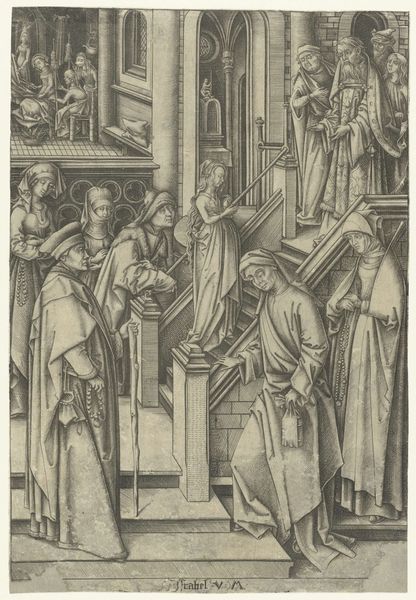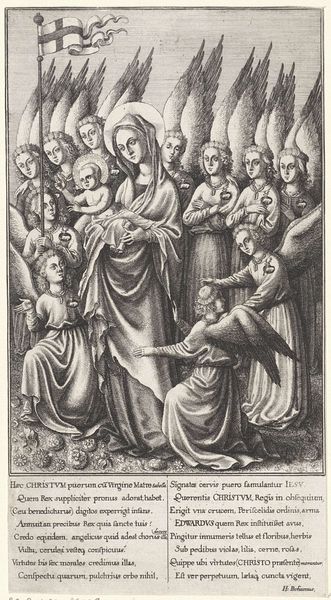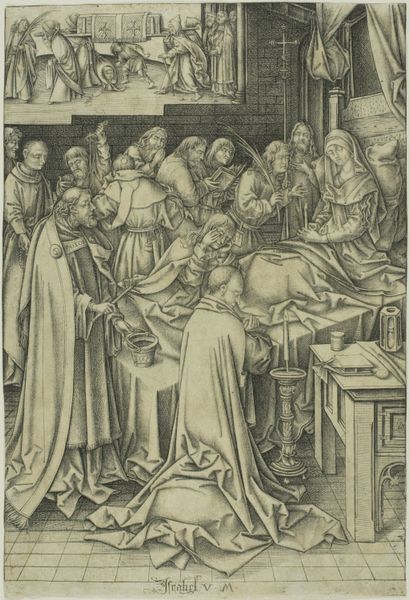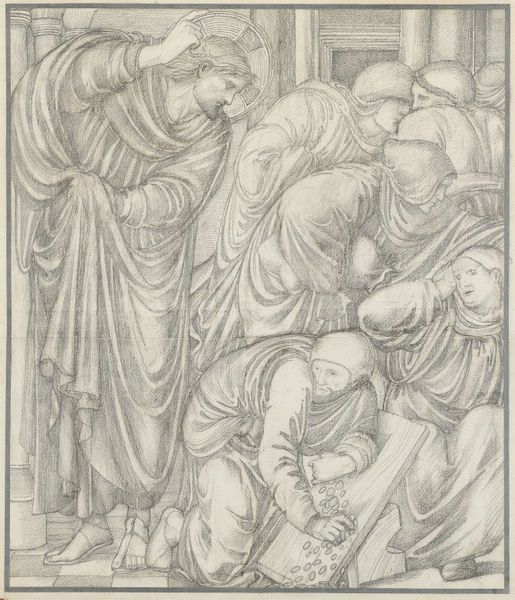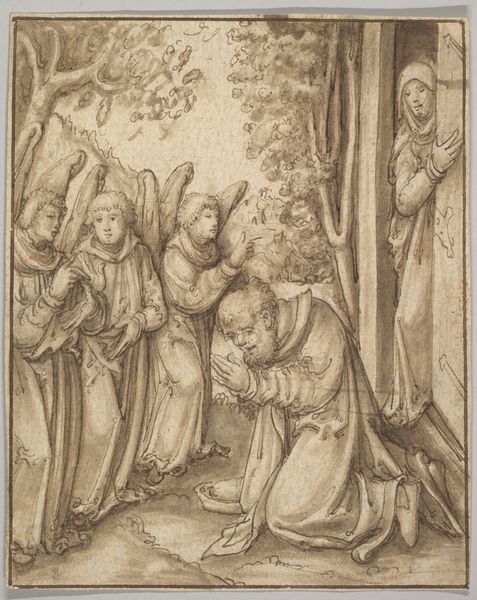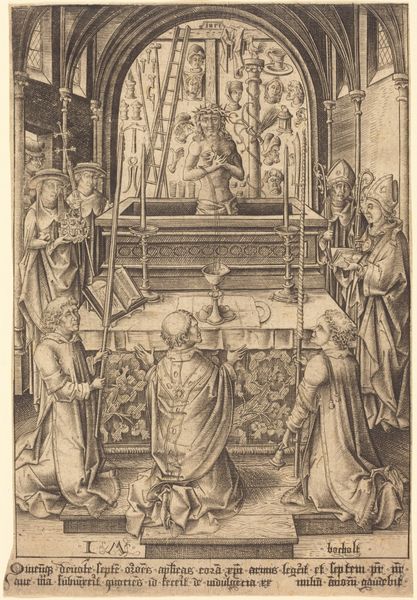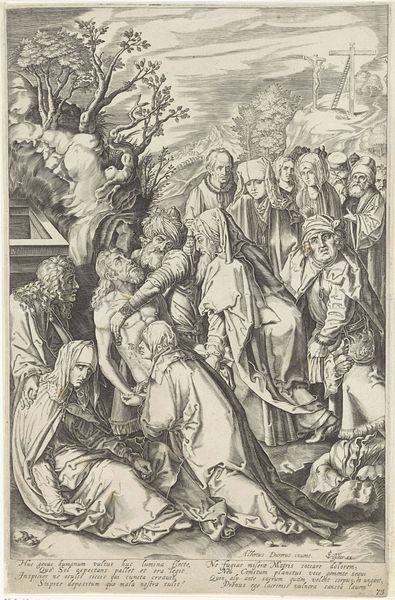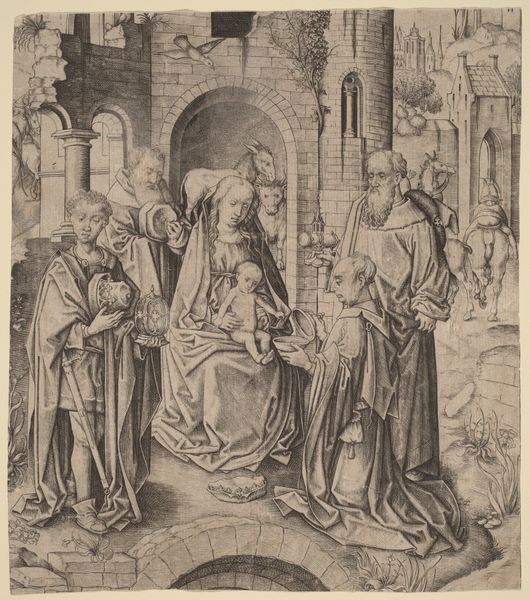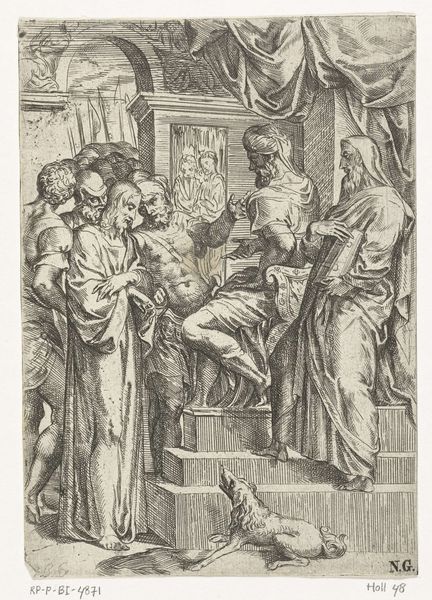
print, engraving
#
medieval
#
narrative-art
# print
#
pen illustration
#
pen sketch
#
pencil sketch
#
figuration
#
pen-ink sketch
#
portrait drawing
#
northern-renaissance
#
engraving
#
pencil art
Dimensions: height 268 mm, width 183 mm
Copyright: Rijks Museum: Open Domain
Curator: Up next we have a closer look at "The Presentation of Christ in the Temple," a copper engraving completed between 1455 and 1503, created by the engraver Israhel van Meckenem, currently housed right here in the Rijksmuseum. What jumps out at you when you look at this engraving? Editor: My first impression? So much linear precision! It has a feeling of somber reverence; the detail in the clothing especially really emphasizes the solemnity of the figures. It gives you so much information without using any color! Curator: Exactly! The beauty here lies within Meckenem's mastery of the burin and metal plate. Think about the amount of labor hours and craftsmanship just to create the printing plate alone. Engravings at the time provided affordable alternatives to paintings for personal devotion or decoration. These works made art accessible to new segments of society, fundamentally altering patterns of production and consumption. Editor: And that explains why he included *everything*, down to the very specific gothic ornamentation within the temple, like showing off how he can mimic reality with the precision of a camera... centuries before they were invented! Though it seems the focus is not exactly about hyperrealism, right? Look at the faces –they feel… typical. Standard. Not meant to portrait any real-life individual. Curator: You’re right! While some level of realism was desired, he definitely draws upon the typical iconography for the representation of those sacred characters. He aimed for idealization. Although this print belongs stylistically to the Northern Renaissance, with clear medieval elements in the modeling and composition, the narrative takes center stage. Each line feels meticulously placed to convey the gravity of the event. And what is more fascinating, is to understand its influence on later art history! Editor: Precisely. When you look at it from that lens, you realize how powerful, and impactful the production and wide distribution of such images can be: it becomes the foundation on which so much will be built. In the grand scheme of things, it is quite awesome! Curator: Definitely. It really is incredible when you really dig into understanding the historical and material context, on the influence an image like that can have through time. Thank you for shining a light on this hidden, and so fascinating, piece of history!
Comments
No comments
Be the first to comment and join the conversation on the ultimate creative platform.

